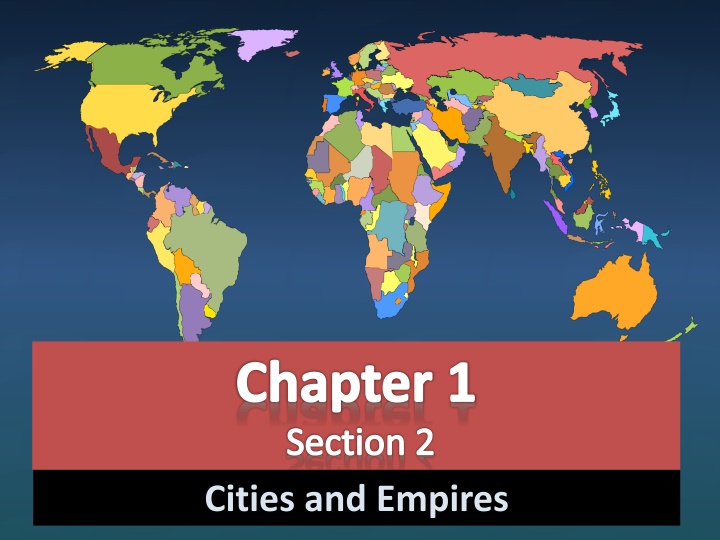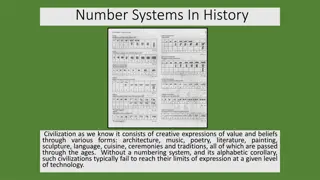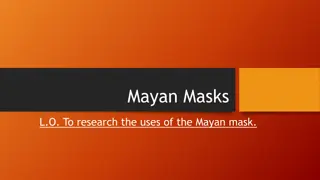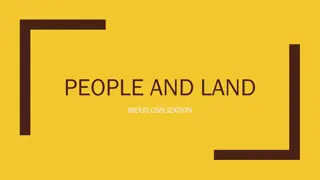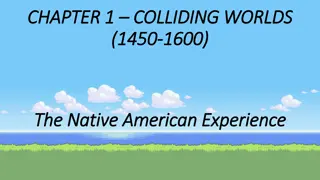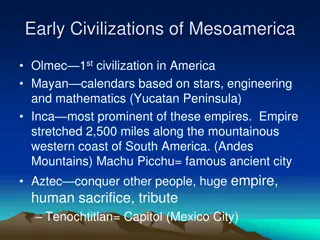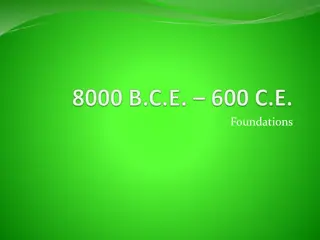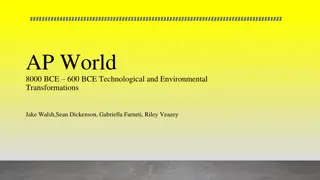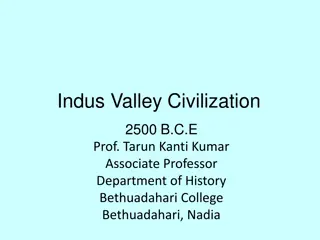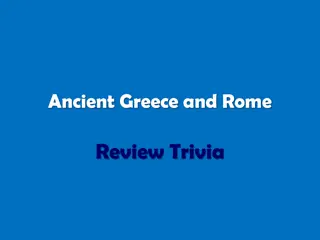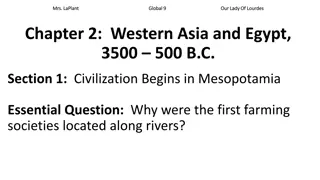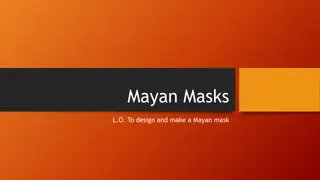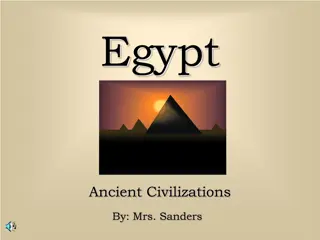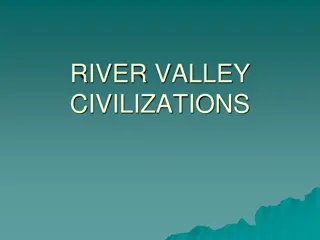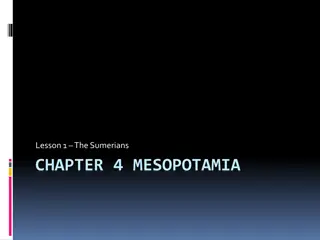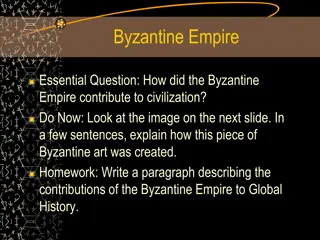Early American Civilizations: The Legacy of Mayan Civilization
Ancient American civilizations like the Maya thrived long before European arrival, building grand cities, developing advanced systems of writing and astronomy, and engaging in trade and agriculture. The Mayans, known for their religious rule, monumental architecture, and skilled astronomy, left a lasting legacy despite the eventual decline of their civilization.
Download Presentation

Please find below an Image/Link to download the presentation.
The content on the website is provided AS IS for your information and personal use only. It may not be sold, licensed, or shared on other websites without obtaining consent from the author.If you encounter any issues during the download, it is possible that the publisher has removed the file from their server.
You are allowed to download the files provided on this website for personal or commercial use, subject to the condition that they are used lawfully. All files are the property of their respective owners.
The content on the website is provided AS IS for your information and personal use only. It may not be sold, licensed, or shared on other websites without obtaining consent from the author.
E N D
Presentation Transcript
Chapter 1 Section 2 Cities and Empires
Early American Civilizations A). Long before the arrival of Europeans in the early 1500s, several great civilizations, or highly developed societies, arose in present- day Mexico and in Central and South America. B). These civilizations built: Enormous cities (in thick jungles and on mountain tops that were hard to reach). Developed complex systems for writing, counting, and tracking time.
Early American Civilizations The largest and most advanced of these civilizations were the: Olmec Lived in what is now Mexico, Guatemala, and Honduras Lived between 3000 B.C. and 1500 B.C. Built stone pavement and drainage systems Farmers produced enough food to sustain cities containing thousands of people Sculptured large stone monuments Their civilization influenced their neighbors. 1. 2. 3. 4. Olmec Maya Aztec Inca
Mayan Cities The Maya Tikal the largest Mayan city was surrounded by 5 pyramids. The Mayan civilization was a Theocracy, or a society ruled by religious leaders. The Mayans believed that the gods controlled everything that happened on earth. Only the priests knew the gods wishes and therefore the priests held great power in the Mayan society and made most of the important decisions. The temples on the top of the pyramids were religious and governmental centers. The priests wore gold jewelry and detailed headdresses; the priests in the temples performed rituals dedicated to the Mayan gods. Built their civilizations in the steamy rain forests of present-day Mexico, Guatemala, Honduras, and Belize. Planted Maize, Beans, Sweet potatoes, and other vegetables to eat. Pulled enormous stones from the earth to build monuments and pyramids that still stand today. Much of labor was performed by enslaved people, usually prisoners of war.
Skilled Astronomers and Writers The Mayan became skilled astronomers and developed a writing system called hieroglyphics. Hieroglyphics uses symbols or pictures to represent things, ideas, and sounds. They used their knowledge of the sun and starts to develop a 365-day calendar.
Mayan Transport and Trade Transportation Did not have wheeled vehicles or horses! Transported on human s backs using a network of roads that had been carved out of the jungle. Traveled by canoe up and down Mexico s east coast. Trade Farmer s brought maize and vegetables to outdoor markets in the cities; Exchanging their crops for cotton, cloth, pottery, deer meat, and salt. Canoes carried jade statues, turquoise jewelry, cacao beans for making chocolate, and other goods.
Decline of a Civilization Around A.D. 900, the Mayan civilization in the lowlands began to decline. By A.D. 1100, the great cities were almost ghost towns. No one knows what caused the decline! Perhaps: Slaves and farmers revolted against their Mayan masters??? The soil became too exhausted by erosion and fire to produce enough food for the people??? Mayan civilization collapsed , but descendants still live in parts of Mexico and Central America.
Aztec Centuries after the fall of the Maya, a group of hunters wandered through central Mexico in search of a permanent home. In 1325, they came upon an island in Lake Texcoco (today part of Mexico City). There, the Aztec saw a sign: an eagle sitting on a cactus, with a snake in its beak. That meant this island was to be their home.
Tenochtitlan One of the greatest and largest cities in the Americas Home of the Aztec s capital city Center of trade, attracting thousands of merchants to its outdoor market places Its construction was a miracle of human labor and engineering Directed by priests and nobles, workers toiled day and night A). Workers created bridges and causeways by pulling soil from the bottom of the lake linking the island to the shore B). Workers filled parts of the lake with earth so that crops could be grown
War and Religion Aztec civilization grew into a military empire 1400s, the Aztec army conquered nearly all rival communities Aztec warriors raided their victims taking: maize, cotton cloth, copper, and weapons Conquered people were forced to work as slaves Like the Maya, the Aztec organized their society around religion Aztec believed that human sacrifices were necessary to keep the gods pleased and to ensure abundant harvests Thousands of prisoners were sacrificed in religious ceremonies
Inca Inca Empire developed in the western highlands of South America. Its capital city, Cuzco, was founded around A.D. 1200. Inca Empire was the largest of the early American civilizations. 1438, Emperor/Inca ruler, Pachacuti and his son, Topa Inca, conquered neighboring lands building their empire, stretching for more than 3,000 miles! More than 9 million people at its height (includes many conquered people).
Life of the Inca Incas were very advanced. They built 10,000 miles of stone paved roads, that ran over mountains, deserts, and through jungles. Inca did not have a system of writing, but they developed a system of record-keeping with string called Quipus. Inca developed a system of TERRACING the land by building broad platforms so that they could plant crops on mountainous slopes. Stone walls were built on the terraces to hold the soil and plants in place. Farmers grew: maize, squash, tomatoes, peanuts, chili peppers, melons, cotton, and potatoes. Rope bridges made from grass crossed canyons and rivers Runners carried messages both to and from the Emperor to remote outposts of the empire to Cuzco. Quechua Language of the Inca. Became the official language of the entire Inca empire.
Worshipping All land belonged to the Emperor, who was believed to be a descendant of the sun god. Inca believed that the sun god enjoyed displays of gold. Therefore, the Inca created magnificent gold jewelry and temple ornaments. Inca built special cities devoted to religious ceremonies: Machu Picchu, one of these cities, was on a mountaintop site.
Key Terms Define the following terms: 1. Civilization 2. Theocracy 3. Hieroglyphics 4. Terrace
5 Question Quiz 1. Machu Picchu is a small ________ city. a). Aztec b). Maya c). Inca 2). Tikal was the largest _______ city. a). Aztec b). Maya c). Inca 3). Tenochtitlan was an ________ city. a). Aztec b). Maya c). Inca 4). Developed hieroglyphics a). Aztec b). Maya c). Inca 5). The ___________ grew into a military empire. a). Aztec b). Maya c). Inca
